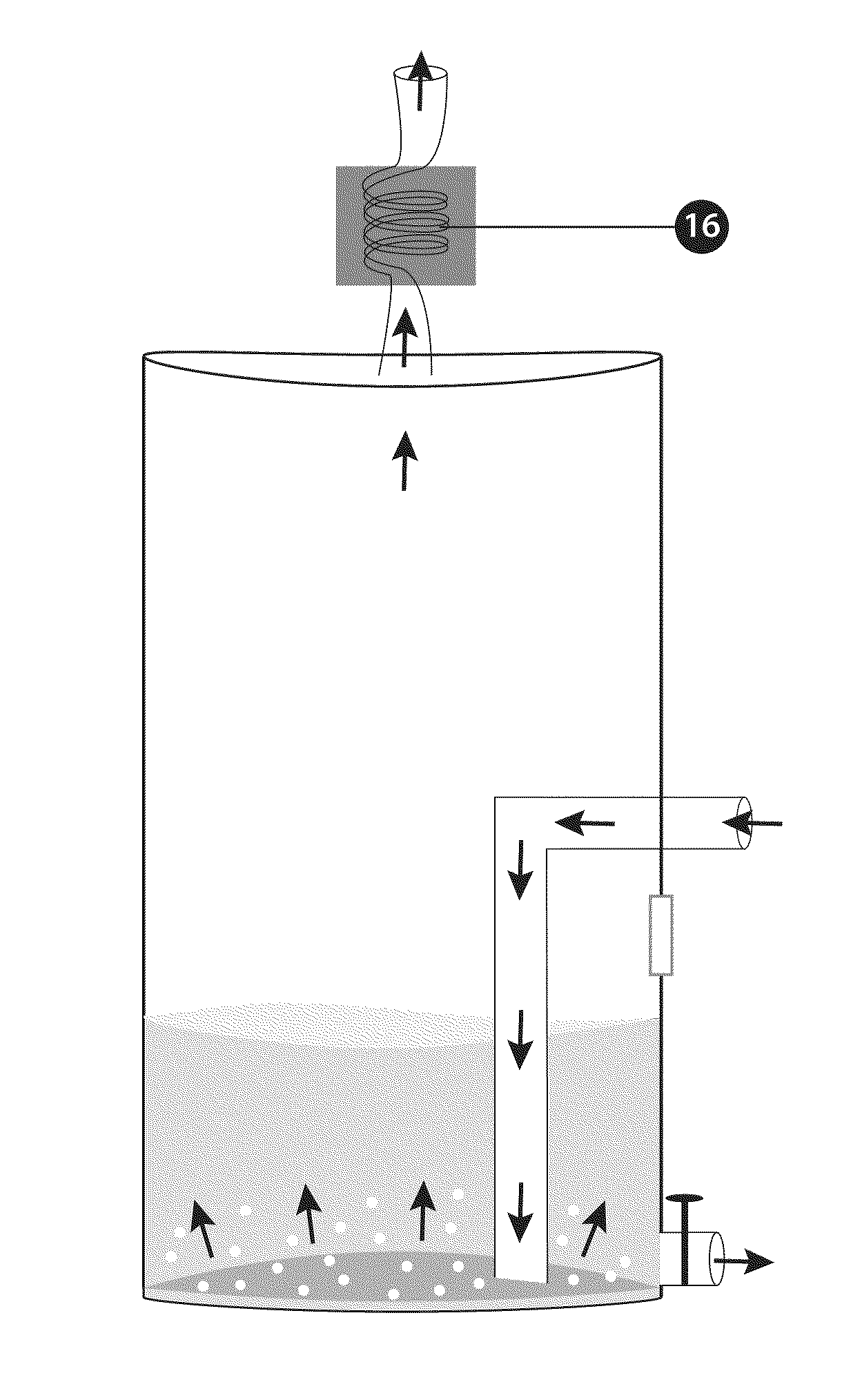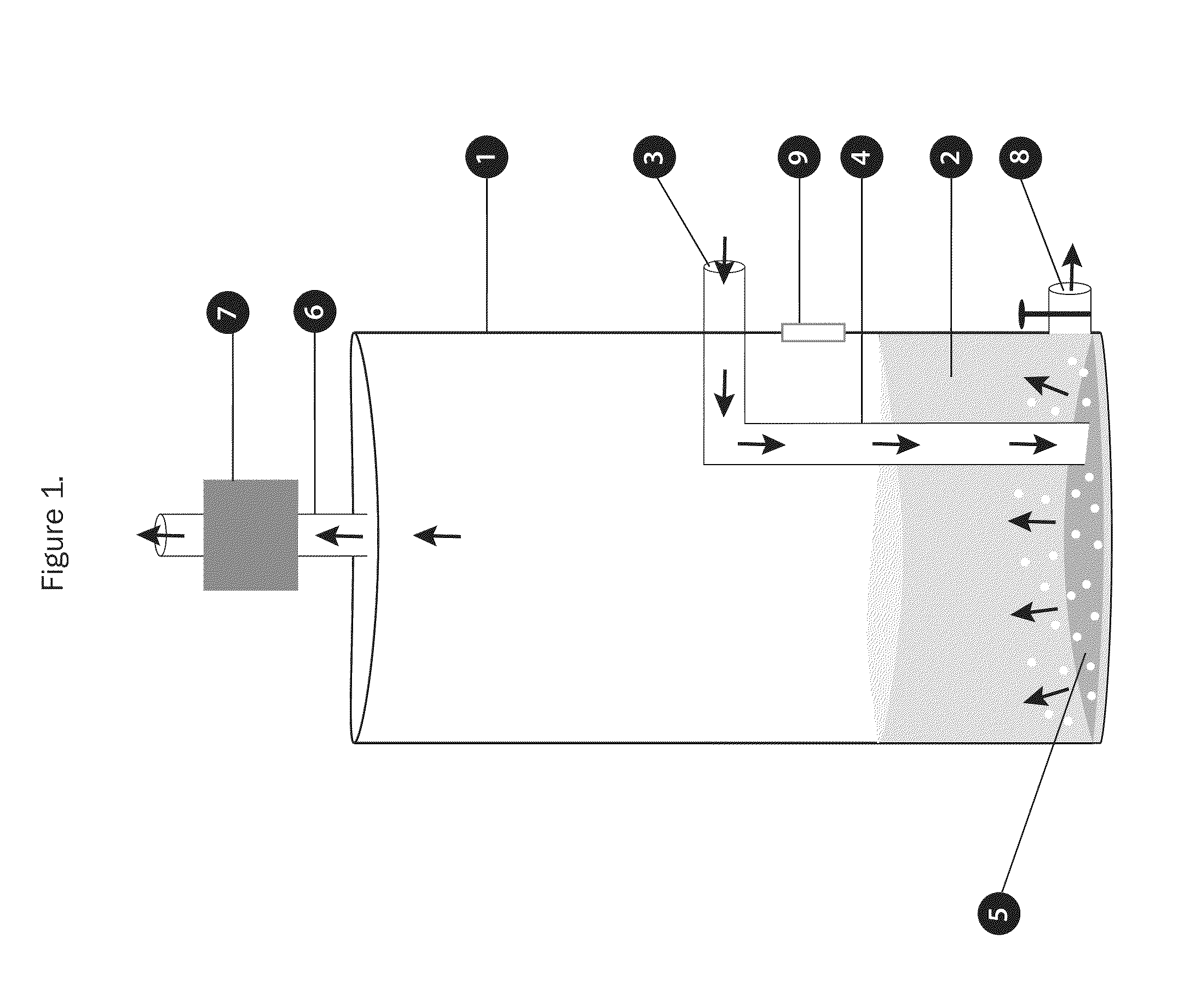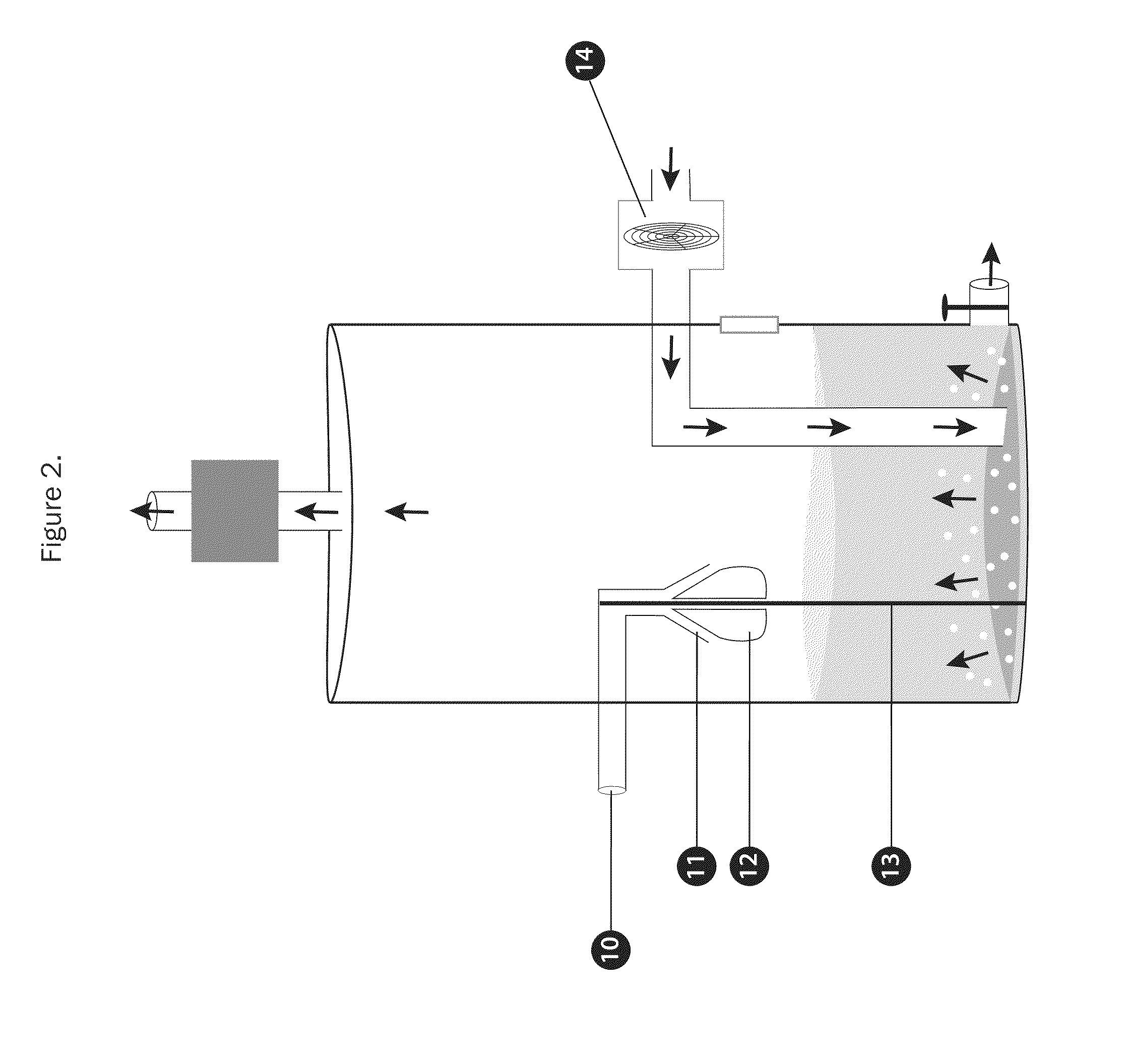Air scrubbing system
a technology of air scrubbing and air filter, which is applied in the direction of dispersed particle separation, disinfection, and separation processes, etc., can solve the problems of affecting health, affecting the health of patients, and causing havoc, so as to prevent accidental flow of alkali and prevent operations
- Summary
- Abstract
- Description
- Claims
- Application Information
AI Technical Summary
Benefits of technology
Problems solved by technology
Method used
Image
Examples
first embodiment
[0080]The FIG. 1 represent an air-scrubbing device is shown according to the present invention. The device generally includes a housing 1 provided as a generally cylindrically elongate body adapted to be vertically disposed, a liquid alkali 2 maintained generally within the housing 1. The housing 1 houses the liquid alkali 2 and operates as a conduit through which a stream of air can be freely passed for treatment by the liquid alkali 2. More specifically, and as will be more fully explained, the housing 1 generally includes an air inlet port 3 through which a contaminated stream of air is drawn into an inner tube 4 of the housing 1 reaching almost to the bottom of housing 1, and passes through a ceramic sparger 5, which drives the contaminated stream or airflow into the liquid alkali 2 as fine bubbles. The housing 1 generally also includes an air outlet port 6 or exhaust vent through which the chemically-scrubbed or otherwise decontaminated airflow returns to the external environme...
second embodiment
[0081]FIG. 2 represents a second embodiment where the air inlet port 3 attached to a blower fan 14 that operates to forcefully draw air into the air inlet 3 from the external environment when actuated by an on / off or variable speed switch that can be disposed on the housing 1 in a position that generally positions it for ready user access. Also shown in this embodiment is a feature to keep the level of liquid constant by providing a float ball 12 moving up or down a shaft 13 connected to a valve 11, which in turn is connected to a supply of water through a conduit 10. FIG. 2 shows air drawn into the inner housing 1, it is driven through the liquid chemical 2, and subsequently through the sparger 5 and then through the air outlet port 6 and then through filter 7.
[0082]FIG. 3 shows another embodiment intended for portable use in conjunction with a respiratory apparatus wherein a housing 1 is supplied with another wall as an additional element 15, which serves a means of retaining the ...
PUM
| Property | Measurement | Unit |
|---|---|---|
| pore size | aaaaa | aaaaa |
| temperatures | aaaaa | aaaaa |
| concentration | aaaaa | aaaaa |
Abstract
Description
Claims
Application Information
 Login to View More
Login to View More - R&D
- Intellectual Property
- Life Sciences
- Materials
- Tech Scout
- Unparalleled Data Quality
- Higher Quality Content
- 60% Fewer Hallucinations
Browse by: Latest US Patents, China's latest patents, Technical Efficacy Thesaurus, Application Domain, Technology Topic, Popular Technical Reports.
© 2025 PatSnap. All rights reserved.Legal|Privacy policy|Modern Slavery Act Transparency Statement|Sitemap|About US| Contact US: help@patsnap.com



